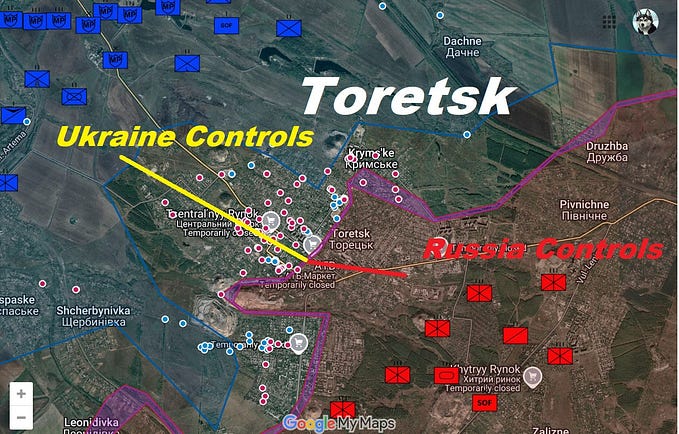The Middle Eastern Cold War

As the new year began, the nation of Saudi Arabia announced that it had executed 47 prisoners. The majority of those killed belonged to al-Qaeda, but one other name stuck out: Nimr al-Nimr. A Shiite religious leader who was known for his strong criticism of the country’s ruling Sunni monarchy, al-Nimr was arrested for his activism and weapons charges in 2012. Following a trial that the human rights group Amnesty International called “deeply flawed,” he was given the death sentence. Saudi Arabia, fully aware of the controversy surrounding the case, went through with his execution.
Shiite Muslims across the Middle East reacted strongly to the execution and its symbolic value, nowhere more so than in the world’s largest Shia nation, Iran. The nation’s Supreme Leader, Ali Khamenei, Tweeted that there is “no doubt Divine revenge will seize oppressors who killed him.” Iranian citizens attacked the Saudi embassy building and a separate consulate building, and though the attacks were condemned by the Iranian government, Saudi Arabia responded by cuting off diplomatic ties with Iran. Several of Saudi Arabia’s allies- Bahrain, the United Arab Emirates, and Sudan- have followed suit and done the same.
This execution may have served as a catalyst for the events that followed, but this is about far more than just Nimr al-Nimr or religious conflict, and al-Nimr would probably tell you so himself if he could. A leaked Wikileaks cable summarizing a 2008 meeting between him and an official from the State Department said that “his fundamental view of foreign powers — including Iran — is that they act out of self-interest, not out of piety or religious commonality.” This entire ordeal has just been the most recent chapter in one of the most important stories playing out today: a long-standing geopolitical conflict between Iran and Saudi Arabia.
Chess Board Politics
Iran and Saudi Arabia are two nations that are both deeply similar and radically different. The two most powerful nations in the Middle East, both are Islamic theocracies with enormous influence over affairs in the region. Both have very poor records regarding human rights. Both have a heavy hand in global oil markets: Saudi Arabia is the world’s second largest oil producer and receives 46% of its GDP from oil revenues, while Iran is the world’s seventh largest oil producer and receives 22% of its GDP from oil revenues.
However, Iran is a Shia nation and Saudi Arabia is a Sunni nation, representing the two separate main branches of Islam. Iran is a much larger nation, consisting of 81.8 million people while Saudi Arabia consists of only 27.8 million. Iran is also slightly more democratic, allowing its citizens to vote in elections among certain pre-selected candidates for the president and the legislature, while Saudi Arabia is a full-blown monarchy. Most important of all, however, is that Saudi Arabia is an American ally, while Iran doesn’t even have diplomatic relations with America.
During the Cold War, U.S. interests regarding access to oil and the prevention of Soviet expansion lined up with the interests of the anti-communist and oil-rich Saudi Arabia, making the formation of an alliance natural. Iran, however, was not so friendly to foreign interests.
When the Secular Social Democrat Mohammad Mosaddegh entered into the position of prime minister in 1951, he tried to nationalize the nation’s oil supply, which was effectively controlled by the UK. The British, at the time still a formal empire, viewed the loss as unacceptable and convinced the United States to help them lead a coup against the popular Mosaddegh, in part by convincing the Americans that he was likely to fall under the influence of the Soviets. The coup, known as Operation AJAX, put a western-friendly dictator in power who was eventually overthrown in the 1979 revolution, putting Iran where it is today. This, along with a number of other transgressions, like U.S. support for Iraqi Dictator Saddam Hussein during the Iran-Iraq war, has led to a pretty cold relationship between Iran and America.
The two similar but different nations of Iran and Saudi Arabia are now in a competition to hold the status of being the most influential nation in the Middle East, or what international relations scholars call a “regional hegemon.” Each nation is poised to ultimately gain control over the Middle East, and the only thing stopping one is the other. This conflict serves as the all-so-important backdrop to the various different conflicts that we see in the Middle East today.
Whenever there is a crisis in the Middle East, it can be expected that Saudi Arabia and Iran are on opposing sides of the issue. During anti-government protests in 2011, Saudi Arabia backed the Sunni monarchy of Bahrain while Iran lent verbal support to the nation’s Shia majority. More recently, there are two active wars being fought which are in part proxy wars between the two powers: Yemen and Syria.

Yemen
Though overshadowed by the much larger and deadlier conflict in Syria, the war going on in Yemen today is of dramatic importance. According to Security Analyst Martin Reardon, Yemen, a nation just South of Saudi Arabia, is considered by the Saudis “to be the weakest security link in the Gulf.” If Yemen falls into anarchy or develops a government unfriendly to Saudi Arabia, it will leave the Saudis exposed to significant threats along its border, and thus to the sea. To prevent this from happening, Saudi Arabia provides strong support to Yemen’s government.
Unfortunately for Saudi Arabia, however, the Yemeni government has effectively been dissolved after its unpopularity allowed Houthi rebels, members of the country’s Shiite minority, to take control of the country. The Houthi have received material support from Iran, who views them as a friendly force. Ibrahim Fraihat, a foreign policy researcher at the Brookings Institution, commented that “In the regional cold war, [the Houthi takeover] has strengthened the position of the Iranians. For the Saudis, [this] is definitely not good news.”
In response to the perceived security threat, Saudi Arabia began a lengthy airstrike campaign with the intention of weakening the Houthis. The campaign, supported by 45 advisors from the U.S. military, has drawn extensive criticism for its absolute brutality and apparent lack of concern for civilian casualties, with bombs winding up everywhere from wedding parties to hospitals. Critics of these airstrikes now include such prominent figures as U.S. Senator Patrick Leahy and UN Secretary-General Ban Ki-moon. However, according to reporting done by Foreign Policy magazine, the American government has been providing diplomatic cover to protect Saudi Arabia from international criticism. In October of last year:
…the United States blocked a proposal in a U.N. Security Council sanctions committee to have the committee’s chair… approach ‘all relevant parties to the conflict and stress their responsibility to respect and uphold international humanitarian law and human rights law,’ according to Security Council diplomats.
This, despite that:
…a U.N. panel of experts responsible for tracking human rights violations and enforcing sanctions against individuals who threaten Yemen’s peace concluded that the Saudi-led coalition, Houthi insurgents, and fighters loyal to Yemen’s former president, Ali Abdullah Saleh, all have routinely violated civilians’ human rights, according to a copy of a confidential report documenting the panel’s findings.
The reason for America’s willingness to protect Saudi Arabia from recognition of their (and others’) human rights violations is because it recognizes the strategic importance of Yemen to the competition for regional hegemony and refuses to allow Iran to gain a foothold on the gulf, which is supposed to be its ally’s domain. This goal is considered so important that the Saudis have even established a “de facto partnership” with their enemy, the terrorist organization al-Qaeda in the Arabian Peninsula (AQAP), since they both share the goal of defeating the Houthis.
Why exactly is Yemen so important? Martin Reardon points out that, if the Iranian-supported Houthis maintain control of Yemen, it could serve as “a strategic bargaining chip” that Iran could use “to pressure the Saudis to tread lightly in Iraq and Syria or risk a concerted effort to further undermine them from their southern border.” According to this theory, Iranian involvement in Yemen is a power play to urge Saudi restraint in Syria.
Syria
Though it shares no actual border with Iran, Syria is a regional ally of Iran which deeply shares its interests and allows it to expand its foothold in the region. As such, the chaos currently taking place in Syria is of great concern to the Iranians. If Yemen shows the violence that Saudi Arab is capable of, then Syria shows the violence Iran is capable of. Iran has been critical in propping up the remnants of the brutal dictatorship of Bashar al-Assad in the conflict, providing his forces with weapons, equipment, and military advisors, along with lots and lots of cash. All of this despite the fact that evidence suggests Assad has used chemical weapons and barrel bombs against civilians on a large scale. Iran has also been utilizing its ties to the extremely powerful and extremely deadly Lebanese terrorist group Hezbollah, a long-time Iranian ally, by helping them become a effective pro-Assad fighting force in Syria.
Saudi Arabia’s involvement in the Syrian conflict is deeply complex, but it is still shaped primarily by its feud with Iran. According to Security Analysts Benedetta Berti and Yoel Guzansky, the Saudis were originally pleased by the opportunity that the Syrian crisis posed, as “the rebellion against [Assad] gave the Saudis a new opportunity to attempt to weaken Iranian influence in the area by his ouster.” The Saudis began “aiding all rebel forces it regards suitable for the anti-Iranian cause within the Syrian rebel camp” with the goal of “strengthen[ing] elements among the rebels, so that if and when Assad falls, those elements will gain control over what remains of the Syrian state.” The Saudis also gave large amounts of money to the Lebanese Army with the intention of weakening Hezbollah.
The emergence of ISIS as the most prominent anti-Assad party in Syria has complicated things significantly, however. To explain why will require a short aside about history and religion.
Though it may surprise some, ISIS actually follows an ideology extremely similar to that which the state of Saudi Arabia, America’s ally, was founded on. The Saudi Arabian government has its roots in Wahhabism, a radically reactionary and puritanical sect of Sunni Islam based on the ideas of Muhammad ibn Abd al-Wahhab. Former British Diplomat Alastair Crooke writes that Wahhabism follows a “takfiri doctrine” which allows adherents to “deem fellow Muslims infidels should they engage in activities that in any way could be said to encroach on the sovereignty of the absolute Authority (that is, the King).” Ibn Saud, the founder of the modern Saudi State, was a follower of Wahhabism, and used the ideology to justify his expansionism:
Ibn Saud’s clan, seizing on Abd al-Wahhab’s doctrine, now could do what they always did, which was raiding neighboring villages and robbing them of their possessions. Only now they were doing it not within the ambit of Arab tradition, but rather under the banner of jihad.
Saudi Arabia was conquered using similar tactics of violence and fear to those that ISIS are currently using, and with a similar ideology supporting them as well. In this sense, Writer Kamel Daoud labels Saudi Arabia as “an ISIS that has made it,” one that is “is better dressed and neater but does the same things.”
Wahhabism became deeply ingrained into modern Saudi politics. However, the Saudi monarchy eventually came to view the maintenance of their power as more important than their religious origins. When a group of anti-government Wahhabists known as “Ikhwan” attempted to revolt against the monarchy, the King crushed them. This, Crooke notes, was the start of a fundamental change in the operating ideology of Saudi Arabia:
Wahhabism was forcefully changed from a movement of revolutionary jihad and theological takfiri purification, to a movement of conservative social, political, theological, and religious da’wa (Islamic call) and to justifying the institution that upholds loyalty to the royal Saudi family and the King’s absolute power.
In other words, the moment that Saudi Arabia crushed a Wahhabist movement it disliked, it changed from a radical religious movement to a movement that primarily served to justify the nation’s monarchy. This is the problem: ISIS is similar to a modern day Ikhwan movement: it seeks to return to the violent purification that once embodied the Wahhabist movement, rejecting the bureaucratic political turn made by the Saudis. Thus, ISIS is “deeply Wahhabist,” but also separate from and opposed to the Saudi government, so it “could be seen essentially as a corrective movement to contemporary Wahhabism” and “a return to the true origins of the Saudi-Wahhab project.”
On the one hand, Saudi Arabia sees a natural ally in ISIS, sharing both an ideology and an opposition to Iranian interests in Iraq and Syria. On the other hand, it also understand that the way ISIS adheres to a revitalized form of Wahhabism poses a fundamental threat to the very foundations of its government. The question: to fight off Iran, do they ally themselves with this organization of similar-minded people who wish to destroy them as well? Saudi Arabia is willing to support Islamic extremists abroad when it promises strategic gains, but it deals with Islamic extremists that pose a threat to its existence very harshly. ISIS seems to fit in both groups.
For now, the Saudis have been maintaining a largely hands-off approach to ISIS. While they are a member of the U.S. anti-ISIS coalition, they quite intentionally do very little to actively fight them. They have held organized talks among Syrian rebel groups (interestingly excluding the extremely effective Kurdish forces while including groups like Ahrar al-Sham, allies of Syria’s al-Qaeda affiliate al-Nusra), but the primary focus of such talks was removing Assad, not fighting ISIS.
The problems listed here give us just one glimpse into the enormous complexities of the Middle East today: Saudi Arabia wants to weaken Iranian influence in Syria by weakening Assad, but is restrained by its fears of both the empowerment of ISIS and the escalation of Iranian-influenced violence and instability in Yemen.
Who’s on First?
Recent developments have been in Iran’s favor. Iran is successfully developing a friendly force in Yemen while Saudi Arabia’s attempts to disrupt Iranian interests in Syria have been hampered by their need to maintain a precarious balance between opposing goals. Furthermore, Iran is expected to come into a substantial economic victory soon, as they have followed the terms of the U.S.-Iranian nuclear deal and are expected to meet the requirements for sanction relief very soon. On the other end, low oil prices (which Saudi Arabia is ironically largely responsible for, keeping prices low for political reasons) are making a significant dent in the the Saudis’ significant financial reserves. Saudi Arabia has also announced that it is considering selling private shares of its enormous state-owned oil company. The nation has an extremely strong fiscal position, and it isn’t likely to face a financial crises anytime soon, but it seems as though policymakers are starting to get a bit nervous.
This most recent direct spat between the two nations should be seen in this greater context. Saudi Arabia’s decision to execute Nimr al-Nimr even though they knew it would result in backlash suggests that it was likely meant as an intentional slight to Iran in some way, though the exact reason remains unknown. When Iranian citizens went a step farther and attacked the Saudi embassy, the Saudis decided that it was final straw and decided to cut off diplomatic relations to display anger at the expansion of Iranian influence across the region. Just like al-Nimr said, this is fundamentally a political conflict between two self-interested powers, not just a matter of religious spatting.
The two sides are unlikely to break into anything resembling an all-out war: Iran has too much to lose from declaring war on an American ally, which would almost certainly result in an end to its desperately needed sanction relief, while Saudi Arabia wouldn’t want to fight Iran head-on while simultaneously dealing with threats to both its North and South. But whatever does become of this conflict, and whichever of the two similar but different powers ends up accomplishing its aim of regional hegemony, it will shape the Middle East for years to come. When watching events unfold, it is important to keep this in mind.
Originally published at theodysseyonline.com on January 12, 2016.








